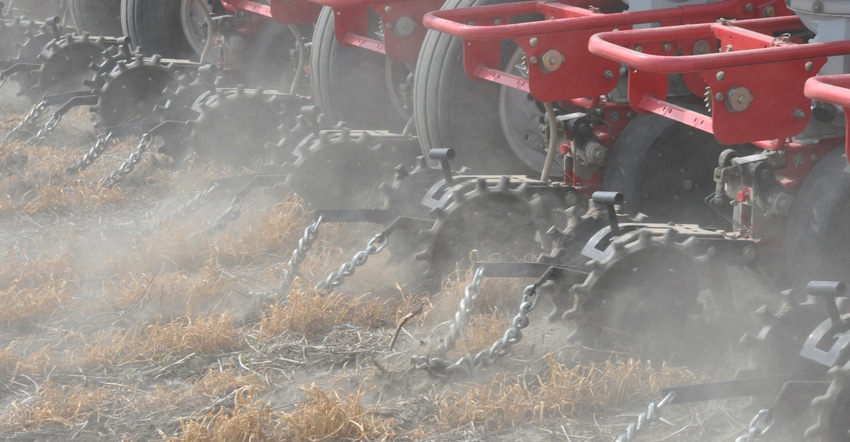
“Yield potential starts at the bottom of the furrow,” says Cory Muhlbauer, research and development agronomist with Precision Planting. “The soil provides almost everything the seed needs to survive, thrive and produce at a high level.”
The challenge? The furrow can be a risky place for seeds if they’re not planted in the right environment.
Precision Planting team members share five things that impact yield potential from the start and their recommendations for preventing emergence challenges:
1. Low organic matter. Muhlbauer says if water is the only limiting factor, soils with 1.3% organic matter compared with 3.7% organic matter may yield 100 bushels per acre less based on the soils’ ability to retain and use water. “Organic matter is the best representation of crop yield potential,” he says. Do you need to boost your soil’s organic matter? Consider reduced tillage or cover crops.
2. Early-season nutrient availability. Nutrient availability varies throughout the year, Muhlbauer explains, and nutrient levels are low in the spring as microbes begin feeding. Phosphorus is especially low because soil microbes can use up to 90% of the fall-applied MAP or DAP. Factoring in soil mineralization and temperatures, Muhlbauer says adequate phosphorus levels may not be available until June and recommends starter fertilizer to provide seeds adequate early-season nutrients.
3. Residue or dry soil in the furrow. Bryce Baker, marketing lead, says a “dirty” furrow can lead to a 17.5-bushel-per-acre yield loss. He recommends row cleaners to help keep residue out of the seed trench and regular planter maintenance, like making sure soil doesn’t get between the gauge wheel and the disk opener. Residue management starts in the fall, he adds, including revisiting tillage plans if excessive residue remains in the field.
4. Missing the moisture line. Seeds planted halfway in the moisture line or above the moisture line will germinate later and lead to uneven emergence, says Dale Koch, R&D product manager. “We know those plants will be runts their whole life,” he says, adding that uneven emergence leads to lower ear counts.
Checking seed depths throughout a field is a good way to ensure seeds are hitting the moisture line, but Koch cautions that spot-checking doesn’t provide an accurate representation of the entire field. For farmers who don’t want to stop the planter constantly and check seed depths, Koch says Precision Planting’s new SmartFirmer tracks soil temperature and moisture as the planter travels across the field and the flags issues on its 20/20 monitor.
5. Planting in cold soils. “If moisture is the fuel, temperature is the throttle,” Koch says, adding that soil temperatures should always be at least 50 degrees F before planting. “In general, research says you start making a gamble below 50 degrees.” Farmers farther north who start planting in 45-degree soil temps may give up ear count for heat units, he adds.
The goal is to avoid “seed chill,” which causes the seed cell membranes to rupture instead of stretching and growing at the right pace. Soybeans are vulnerable for the first 6 to 12 hours, while corn is susceptible for the first 24 to 48 hours. If you’re forced to work in cool conditions, Koch recommends planting in the morning to give newly planted seeds 10 to 12 hours of potential sunlight versus battling colder nighttime temperatures.
About the Author(s)
You May Also Like




